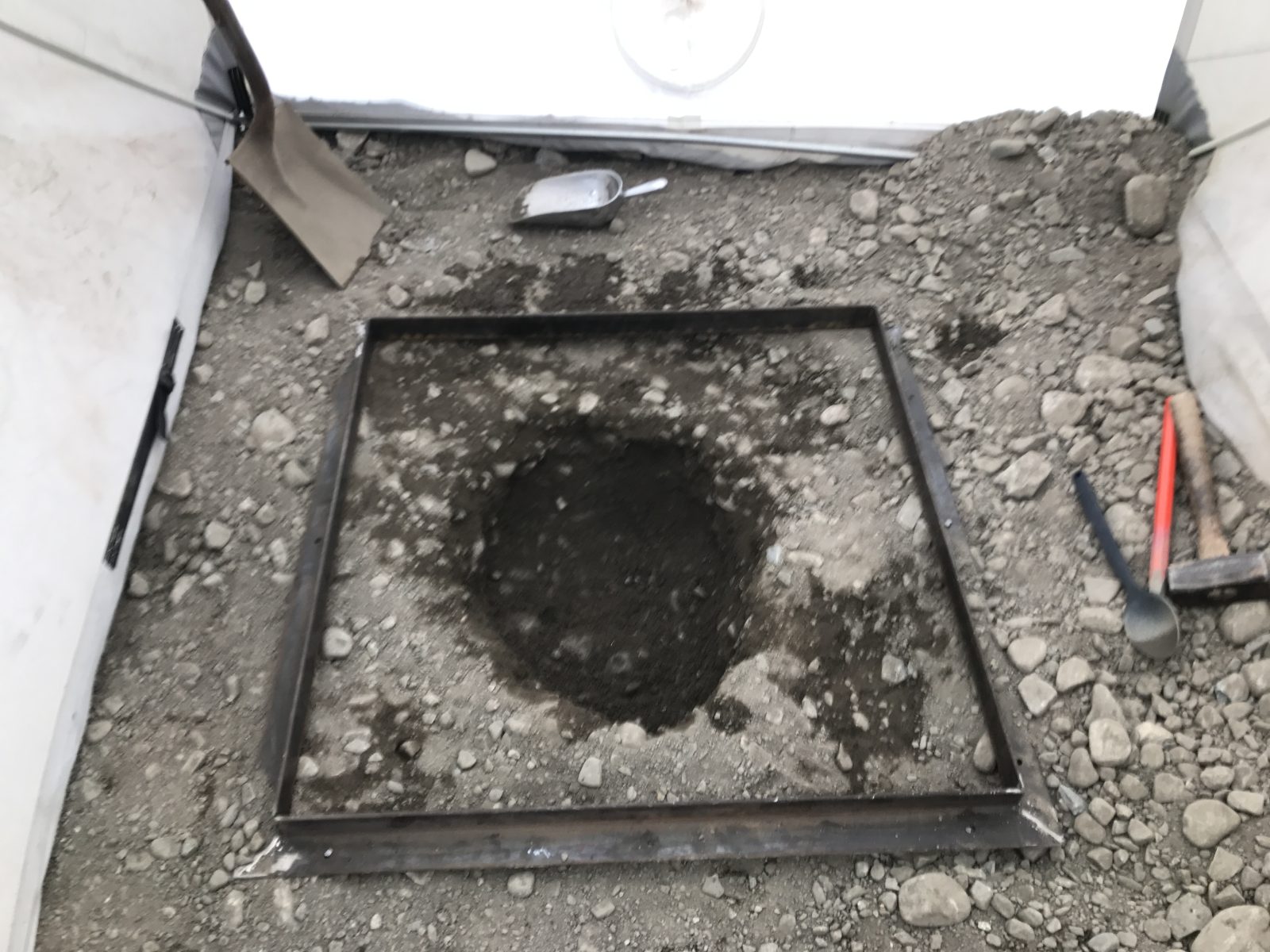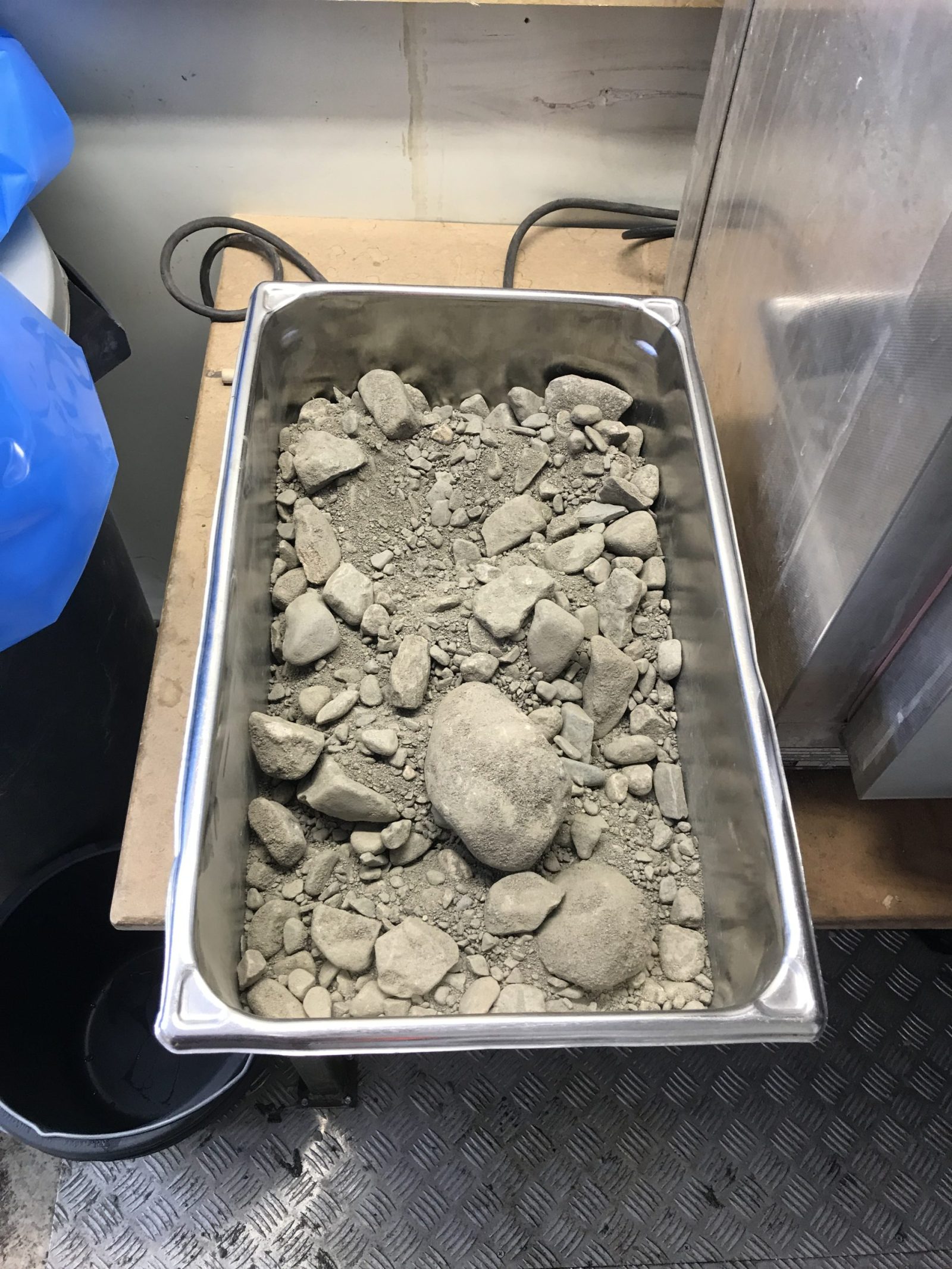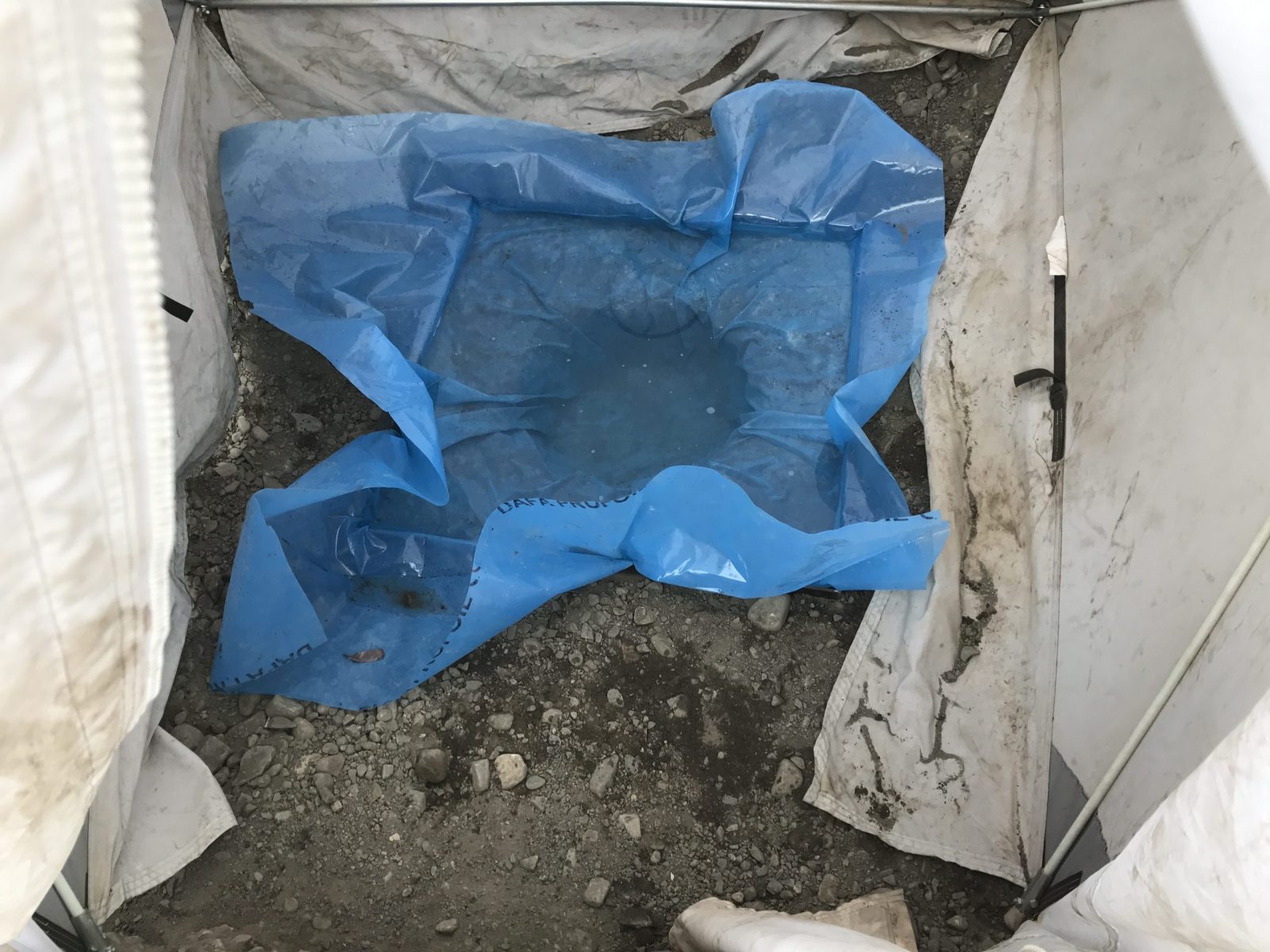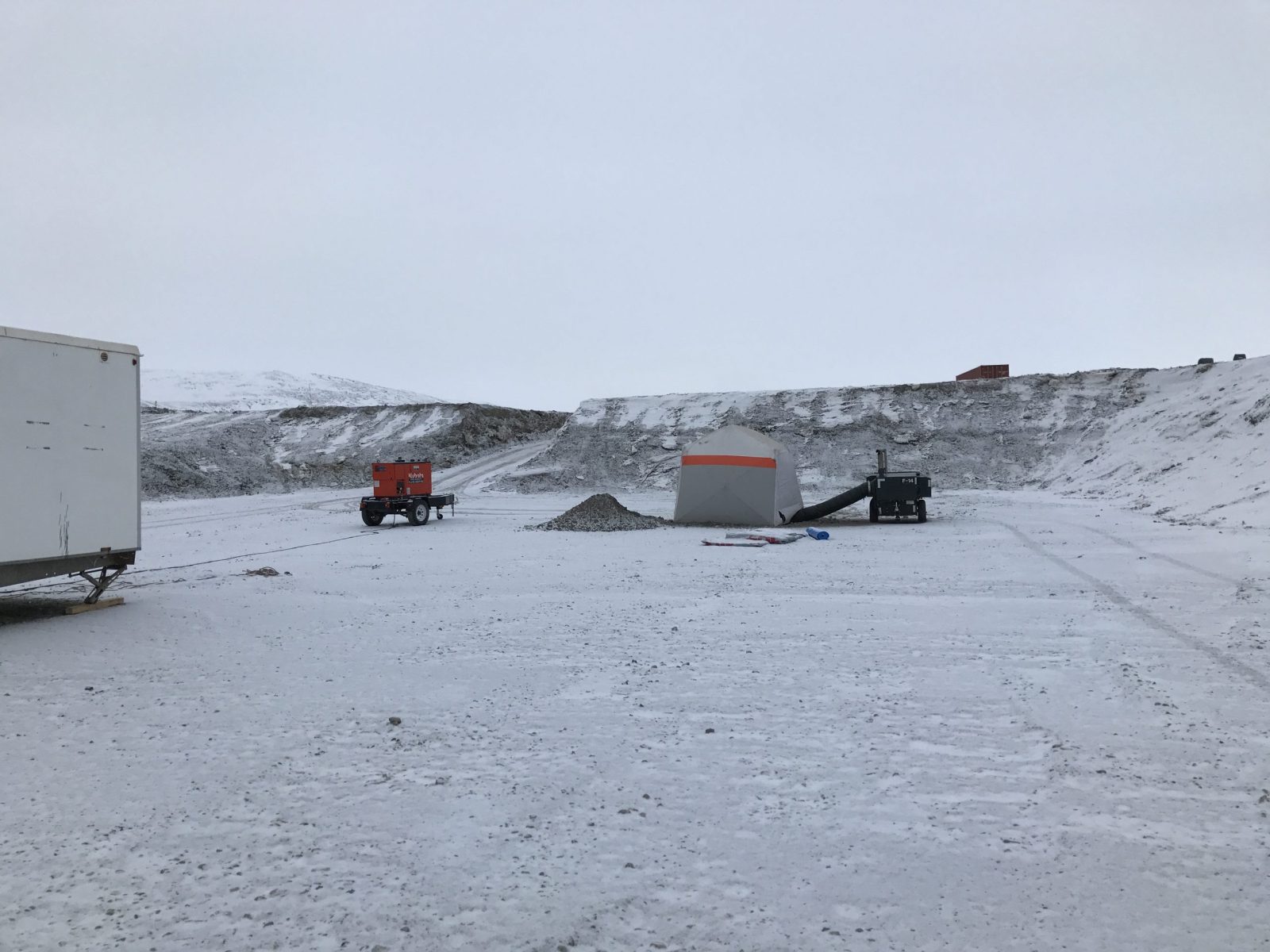Greenland
Thule Air Base, In Situ Soil Density Testing
Scope/Solutions
Constructing a new engineering shop and supply facility at Thule Air Base involved excavating about 9.5 m of native soil down to the top of bedrock and placing compacted, non-frost susceptible (NFS) fill from bedrock to finished grade. After the contractor, MT Højgaard Grønland Aps (MTH), placed and compacted approximately 3 m of NFS fill and tested the compacted fill using a lightweight deflectometer, the U.S. Army Corps of Engineers (USACE) requested that MTH verify the in situ density of the fill using other methods. SGH assisted MTH by developing and executing a subgrade testing program.
SGH reviewed the project’s density testing requirements and the sieve analyses for NFS fill. We determined ASTM D5030 – Standard Test Methods for Density of Soil and Rock in Place by the Water Replacement Method in a Test Pit was the appropriate test method, given the grain size distribution. Highlights of our work include the following:
- Preparing an in situ soil density testing program that complies with the requirements of the project specifications and ASTM D5030
- Identifying laboratory tests to supplement the in situ tests and engaging a third-party laboratory in the United States to test soil samples obtained from the site
- Submitting in situ and laboratory testing programs to the USACE for review/approval
- Coordinating with MTH to procure the equipment necessary to execute the in situ testing program prior to mobilization
- Visiting the remote site to excavate test pits by hand and perform in situ density tests
- Preparing a report summarizing results and comparing our test results to those from the third-party laboratory
We demonstrated the compacted NFS fill’s density met the project specifications, helping the project team avoid costly and time-consuming excavation and replacement.
Project Summary
Key team members





